Verdoyer, cultiver, hybrider
Champigny-Sur-Marne (FR) – Special Mention
TEAM DATA
Team Representative : Daniel Hazanas (FR) - architect; Associates : Lila Bonneau (FR), Miguel Porras (ES), Alejandro González (ES) - architects
5 rue Claude Decaen, 75012 Paris (FR)
+33750962981 - info@maapa.eu
See the complete listing of portraits here
See the site page here
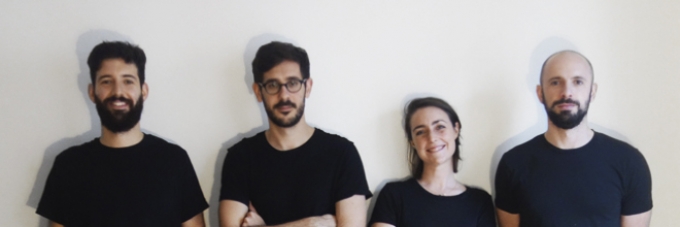
D. Hazanas, L. Bonneau, M. Porras & A. González
INTERVIEW
1. How did you form the team for the competition?
MAÀPA is a French-Spanish collective, was established for Europan 15 in order to share, mutualise and encourage exchange, interdisciplinarity and reflect on the future productive city.
2. How do you define the main issue of your project, and how did you answer on this session main topic: the place of productive activities within the city?
In our opinion, the main problem of the project was to deal with an existing motorway wasteland and its surroundings as part of a productive city project. Our response was to keep the intervention area as an inhabited/productive park while working on the boundaries and densifying and hybridizing the existing buildings.
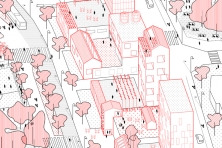
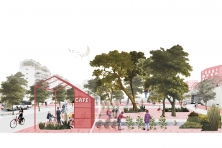
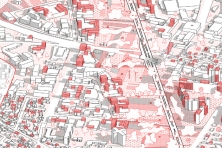
3. How did this issue and the questions raised by the site mutation meet?
The problematic and the questions raised by the change of the site crossed during the following analysis: The current wasteland is evidence of an unrealized project. Indirectly, this "motorway project", not constructible site, has saved the last traces of the town's rurality and has allowed the agricultural plot layout to continue. Moreover, in a second phase, this site was occupied by a former shantytown, then by the creation of vegetable gardens. The "informal heritage" motorway fringe has thus been reappropriated by the citizens. The development of these gardens proves the need of the inhabitants to get closer to nature. However, this vegetalized fringe has created a fracture in the landscape. Today, industries are turning their backs on this vegetated area and buildings are not taking full advantage of these green spaces.
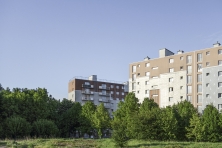
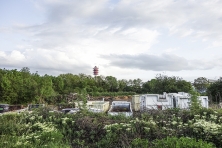
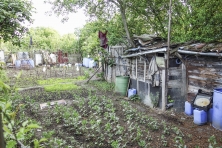
4. Have you treated this issue previously? What were the reference projects that inspired yours?
No, we have only approached it in a theoretical way, mainly through the work of Bernardo Secchi and Paola Vigano, ‘La ville poreuse’. The projects of Lacaton and Vassal in the Grand Parc district in Bordeaux, the Didden Village in Rotterdam, MVRDV architects and Urban Farm in New York have also been references in the development of this project.
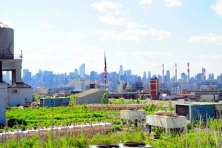
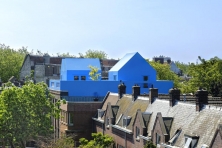
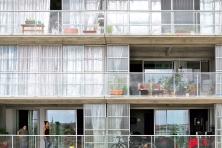
5. Urban-architectural projects like the ones in Europan can only be implemented together with the actors through a negotiated process and in time. How did you consider this issue in your project?
Since its conception the project integrate a spatial-temporal phase (3 steps), planned for 30 years. In parallel to this temporary phase in order to make the project feasible, collaboration and awareness raising work is proposed with local inhabitant.
6. Is it the first time you have been awarded a prize at Europan? How could this help you in your professional career?
Yes, it's the first time we've won an award at Europan. This experience can help us in our professional career because this competition remains an opportunity for young architects; but above all, Europan makes it possible to design and build projects of public interest in order to offer all citizens a healthy environment in line with changes in society.
TEAM IDENTITY
Office: …
Functions: Architect
Average age of the associates : 30 years old
Has your team, together or separately, already conceived or implemented some projects and / or won any competition? If yes, which ones?
The collective has been working together since 2019. For the moment, the projects carried out are on a domestic scale. You can get an overview on the website www. maapa. had. In contrast, the members of the collective have worked independently in different architecture, urbanism and landscape firms in Germany, Italy, France and Spain for 7 years, collaborating with projects of the same magnitude of Champigny-sur-Marne E15.